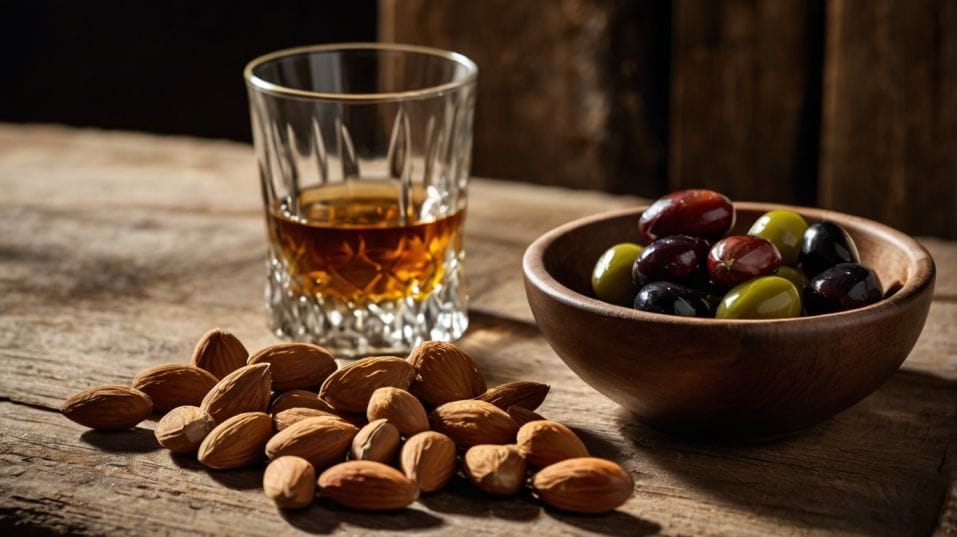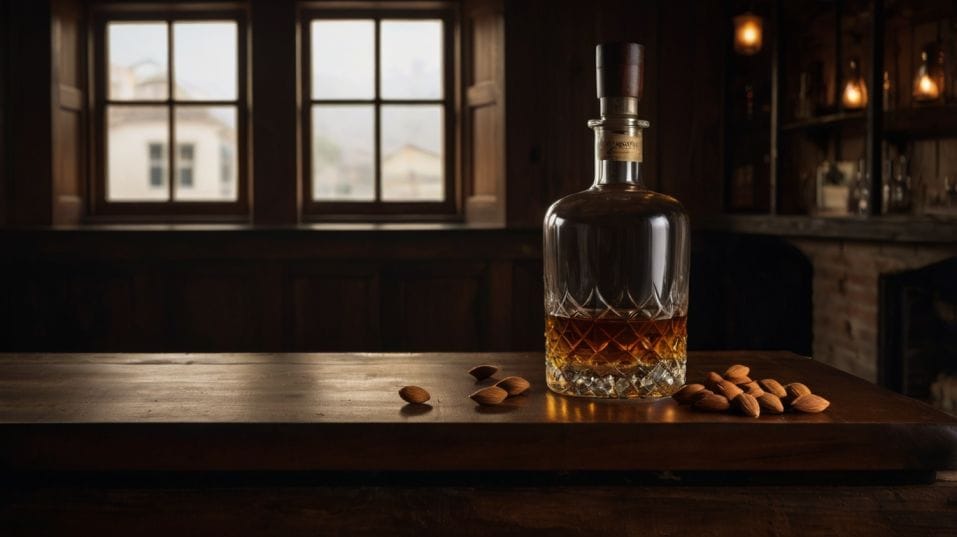Why Salted Snacks Make Whiskey Taste Better
Discover how salted snacks sharpen your whiskey palate. Use this expert-approved trick to make every tasting clearer and more enjoyable.

Ever wonder why your whiskey feels flat halfway through a pour? It might not be the bottle—it might be your palate.
If you're just starting your whiskey journey, there's a simple, surprising trick to instantly elevate your tasting experience: salted snacks.
No fancy pairings, no flavor charts. Just salt. It wakes up your senses, softens the harsh edges, and helps you taste what’s really in the glass. Here's why it works—and how to use it right.
Salt Doesn’t Just Compliment Whiskey—It Conditions You to Taste It
To understand why salt matters, you need to understand what’s happening in your mouth while you sip whiskey. Ethanol dries your palate. Tannins and barrel compounds can fatigue your tongue after just a few sips.
Most beginners—hell, even many longtime drinkers—don’t notice this shift. They just feel like the whiskey “falls off” or “gets boring.” It’s not the whiskey. It’s your palate losing steam.
Salt brings it back online. The science is simple: salt stimulates saliva production, and saliva is essential for tasting. Without it, you miss subtle notes—light florals, fruit esters, even layered spices.
A quick bite of something salty rehydrates your mouth and activates taste receptors across your tongue.
Suddenly, you’re catching the vanilla in a bourbon, the maltiness in a Scotch, the pepper snap in a rye. Salt is a re-tuning fork for your mouth.

It Helps You Separate Heat from Flavor
Ask any beginner what holds them back from enjoying whiskey, and “the burn” is near the top of the list. But here’s the problem: the burn isn’t the enemy.
It's part of the experience. The real trick is learning to separate alcohol heat from actual harshness. Salted snacks help you do that.
Think of salt as a palate stabilizer. It dulls sharp alcohol impact just enough to let your brain focus on what’s underneath. Not by masking it, but by grounding it.
You get to feel the whiskey’s structure—how it builds, how it finishes—without being distracted by the upfront sting.
Why Distillers Do It
Distillers, master blenders, and critics all know this. Many chew on salt or salted crackers before tastings to prep their senses. Not to cheat—just to clear the noise so they can hear the signal.
Try it with a cask-strength pour. Sip neat, then revisit after a few bites of salted nuts. You'll still feel the heat. But you’ll also taste everything else.
Contrast Is a Tasting Tool
Most people think of food and whiskey in terms of pairing. Match smoky with smoky. Sweet with sweet. It’s a tired game. Skip the mirror. Aim for contrast.
Salted snacks—especially the dry, crisp, savory ones—don’t echo your whiskey. They challenge it. They draw out opposites. That’s where you start noticing layers.
The Magic of Opposites
A briny olive can yank hidden caramel out of a high-rye bourbon. A strip of salty prosciutto makes the fruit in an Islay single malt burst into view.
A few salted almonds transform a young grain-forward whiskey from “harsh” to “spicy-smooth” because they give your brain a reference point to compare against.
Taste is relative. Salt gives you that second frame, that contrast you need to decode what’s really going on in the glass.
Salt Helps You Build Flavor Memory Faster
Let’s talk about skill. Because tasting whiskey isn’t luck. It’s not magic. It’s repetition, contrast, and memory.
Every time you sip whiskey after a bite of something salty, you’re creating a sensory bridge. That shift in flavor becomes a landmark in your mind—a reference point you can return to.
Over time, you start building a mental library:
- This one’s got more spice than the last.
- That one has a longer finish.
- This cask has a weird toasted edge I didn’t notice until the salt cut through it.
That’s how real tasters develop intuition. They train with real input. Not by memorizing tasting notes from the label, but by building their own internal map through contrast and calibration.
Salted snacks are a shortcut. A low-effort, high-impact tool that fast-tracks your ability to tell good whiskey from great whiskey, or overhyped from actually complex.
Not All Salted Snacks Are Created Equal
Now, a word of caution: not every salted snack works. Some ruin the effect. Skip the greasy stuff. Fried chips coat your mouth and dull sensitivity.
Overly flavored snacks (BBQ, sour cream, etc.) hijack your palate with sugar and artificial spice. You want something clean and grounding.
What Works Best
Here’s what does work:
- Lightly salted almonds or cashews – neutral enough to not dominate, but great for texture contrast.
- Salted crackers or pretzel sticks – crisp, dry, and perfect for clearing the tongue.
- Cured meats – prosciutto, bresaola, or even jerky can add a savory umami note that sets up deeper drams beautifully.
- Briny olives – especially with smoky or peated whiskey, they unlock earthy sweetness.
Don’t overthink it. Pick one. Taste. Repeat. You’ll notice the difference almost immediately.
Final Thoughts
Salted snacks aren’t there to make whiskey more “fun.” They’re there to make you better at tasting it. They sharpen your senses, train your palate, and give your brain the contrast it needs to decode what’s actually happening in the glass.
That edge you feel when you really “get” what a bottle’s doing? That satisfaction? This is one of the fastest ways to get there.
So tonight, skip the dessert. Ditch the gimmicky pairing chart. Pour something you already own—cheap or premium, doesn’t matter—and grab a handful of something salty. Sip, bite, taste again. This isn’t a trend. It’s a tool. Use it.




